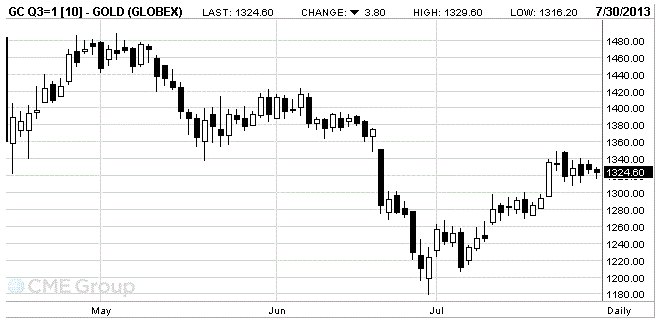Notícias do Mercado
-
16:40
Oil: an overview of the market situation
Prices of oil futures declined substantially, falling to $ 103 per barrel, before the publication of the weekly oil inventory data from the API, and also after the weak report on consumer confidence in the United States.
It should be noted that a report from the Conference Board showed that consumer expectations about the short-term outlook weakened in July and the corresponding indicator of consumer confidence in July fell more than expected. Conference Board said its consumer confidence index fell to 80.3 in July from a revised 82.1 in June. Economists had expected the index to fall to 81.1 from 81.4, which was originally reported in the previous month. In addition, it was reported that the index of expectations in the U.S. in July fell to 84.7 against 91.1 in June, while the current conditions index for July rose to 73.6 against 68.7 in June.
Has had little impact as the report from S & P / Case-Shiller, which showed that home prices in 10 major U.S. cities rose by 11.8% in the year ended in May. The housing price index S & P Case-Shiller 20-city U.S. in May grew by 12.2% y / y compared with 12.5% growth predicted by economists.
Seasonally adjusted, the house price index S & P Case-Shiller 10 cities of the United States in May rose by 2.5 m / m, and the 20-city index rose 2.4% in May compared with April.
Prices in Dallas and Denver have exceeded their maximum values recorded before the financial crisis in June 2007 and August 2006, respectively. In addition, in five cities - Atlanta, Chicago, San Diego, San Francisco and Seattle - monthly growth rates for the first time exceeded 3%.
Meanwhile, add the pressure on oil prices has approximating the Fed meeting, the results of which are expected to be presented tips on reducing the volume of asset-purchase program. Many economists expect that the decline may begin as early as September this year.
The cost of the September futures on U.S. light crude oil WTI (Light Sweet Crude Oil) fell to 103.05 dollars a barrel on the New York Mercantile Exchange.
September futures price for North Sea Brent crude oil mixture fell to $ 106.88 a barrel on the London exchange ICE Futures Europe.

-
16:20
Gold: an overview of the market situation
Gold prices fell slightly today, as many traders prefer to stay out of the market ahead of U.S. Fed meeting, which may shed light on the rate at which the Fed will reduce rates of monetary stimulus. It should also be added that influenced the trading session could have the European Central Bank and the Bank of England, which is scheduled for this week and is expected to confirm previous recommendations.
Recall that last week, gold was back above the $ 1,300 that was the first time in a month, based on comments from Fed Chairman Ben Bernanke that a highly accommodative monetary policy will be needed for the foreseeable future, and that any reduction in the volume of purchases of bonds will be depend on the strength of the economy. The Fed previously said it would probably start reducing programs to stimulate the economy at the end of 2013, and stops all the way to the middle of 2014, which strengthened the dollar and made gold more expensive for foreign investors.
We also add the demand for gold jewelry in India, which is the major buyer of the precious metal, went into decline. According to experts, it is unlikely to gain momentum until the end of August, when activated by just buying season against the season of weddings and religious festivals.
In part on the dynamics of trade have influenced U.S. data. Conference Board released a report that showed that consumer expectations about the short-term outlook weakened in July and the corresponding indicator of consumer confidence in July fell more than expected. Conference Board said its consumer confidence index fell to 80.3 in July from a revised 82.1 in June. Economists had expected the index to fall to 81.1 from 81.4, which was originally reported in the previous month.
The cost of the August gold futures on COMEX today dropped to $ 1324.60 per ounce.

-
06:23
Commodities. Daily history for Jul 29’2013:
Change % Change Last
GOLD 1,329.30 7.80 0.59%
OIL (WTI) 104.43 -0.27 -0.26%
-